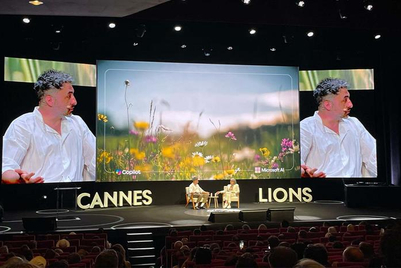
My kids’ experiences of brands are very different from when I was growing up in Singapore. They see vibrant regional or local brands alongside global ones. Where before, global brands were deemed more important, today local brands are given the same weight and consideration. They are on an almost equal footing. Lines between them are becoming blurred, and increasingly consumers are turning to local brands that are relevant to them and meet their aspirations and lifestyle.
People appreciate the originality and creativity of their local brands – from Tsingtao beer, which is constantly looking at new ways to connect with different audiences to the rise of China’s biggest influencer Li Jiaqi, who is increasingly pushing a message of ‘buy Chinese’.
Many consumers are fiercely patriotic and take it for granted that domestic products are just as good as big-name foreign brands. They’re driving a growing fashion for ‘national chic’ — products that integrate aspects of the country’s traditional culture.
Missing the mark
So, for Western brands looking to grow through expansion in the APAC region, the endeavour has become significantly more complex. Brand owners have realised that rolling out in different territories is no longer a straight translation exercise.
Last year, in an interview with CNBC International, Adidas CEO Kasper Rorsted reported a 35% drop in revenue for its Greater China division, acknowledging that Adidas didn’t adapt to an evolving Chinese market and its taste for a more local flavour. He recognised that increasingly brands need to find more innovative ways to stand out, including tapping into domestic trends.
But in their attempts to be more relevant and to connect on a local level, many Western brands still spectacularly miss the mark.
For example, trying to tie into the Chinese Year of the Rat a few years ago, many luxury brands failed to appreciate the common connotations of mischief, theft and disease that go with the animal. In 2020, at the onset of the COVID 19 pandemic, this was particularly inappropriate – some might say offensive.
Too often, Western brands opt for a cultural shorthand. There is a dated approach to the use of colours – too much red, black and gold – and Chinese characters, as seen in the failed attempt by Burberry to play to its Chinese customers; Zodiac signs are plastered on apparel unthinkingly (the pig being another no-no for a Muslim audience, for example); and the dragon is, quite frankly, done to death.
Reverting to such two-dimensional motifs shows a lack of true understanding of APAC’s consumer, and global brands need to do better. Late Fashion icon Karl Lagerfeld even quipped in 2016 in an interview with The Cut about his Cuba Chanel show, “This is all about my vision of Cuba. But of course, what do I know about Cuba?”. Such blunt disregard for cultural nuances just isn’t good enough for today’s brands.
Picking up the nuances
Those that do it well have learnt that a more nuanced and locally driven approach is needed. Key part of this is active listening – looking out for what’s trending, picking up nuances in local language, and tying into local conversations, passions and occasions.
A good example is Maybelline’s mahjong set that the brand seeded with influencers to promote its new Red on Fire lipstick series. It drew on the tradition of people celebrating together with mahjong and successfully created a novel talking point and social media conversation. Its vibrant red highlighted the product with purpose rather than just paying lip service to Chinese aesthetics.

Prada, meanwhile, struck a chord when it transformed a space in a local street market in Shanghai’s Wulumuqi Road neighbourhood. Traditionally a place where older people shop, the takeover impressed younger audiences, allowing Prada to strengthen its connections with shoppers of various backgrounds.
Playing with fusion and relevance
Another key approach to avoiding cultural misappropriation or offence through lazy use of tropes is partnering with local designers. For example, Shenzhen-born Angel Chen is a prolific brand collaborator, bringing an East meets West design aesthetic to brands such as H&M, Adidas and Canada Goose. Dior’s recent womenswear show in Mumbai, India, meanwhile, highlighted the brand’s partnerships with local artisans.
Overall, Western brands need to be less obvious and bolder. They need to play more with fusion and explore how they can tap into wider trends. For example, there is a growing sense of nationalism in China, with the term Guochao (literally translating as ‘National Tide’) gaining traction. Chinese consumers are increasingly looking to support domestic brands that promote Chinese heritage and culture.
A natural step for global companies looking to lean into this is to launch region specific brands to target key markets. For example, L'Oréal launched K-beauty brand Shihyo, the first time the beauty company launched a brand through a joint venture. Other global brands are using regional influencers and dialling up regional origins to bring out their global relevance, such as Starbucks celebrating its ties with coffee growing countries in special coffee roast editions and interactive coffee experiences.
This is the level of thought and insight global brands need to deploy. Cultures are nuanced and diverse, and with APAC increasingly being a core part of future growth strategies, it should be all brands’ ambition to reflect this. Otherwise, the next generation of shoppers will surely pass them by.
Danny Lye is vice president of design for Greater Asia at brand design experience agency Marks



.jpg&h=334&w=500&q=100&v=20250320&c=1)


.png&h=334&w=500&q=100&v=20250320&c=1)




.png&h=334&w=500&q=100&v=20250320&c=1)





.png&h=268&w=401&q=100&v=20250320&c=1)
.png&h=268&w=401&q=100&v=20250320&c=1)

